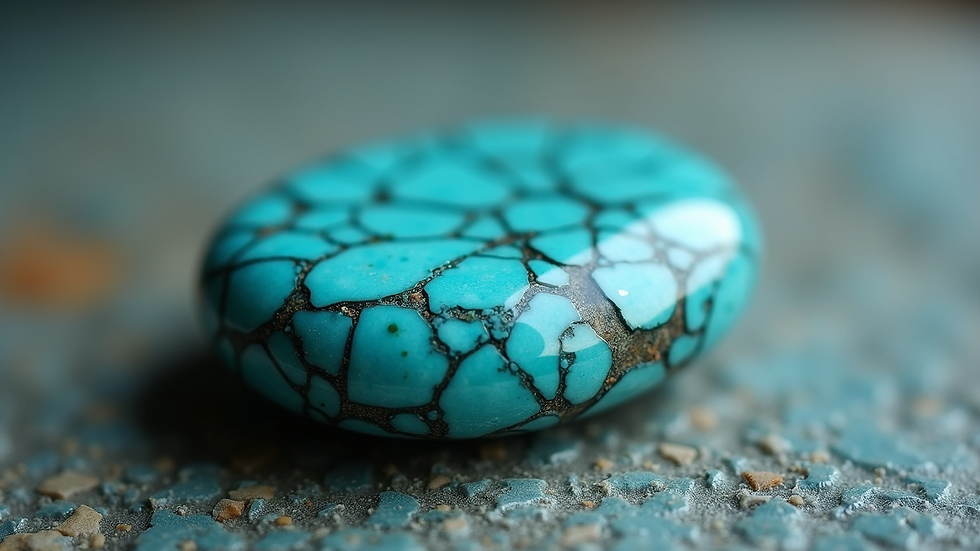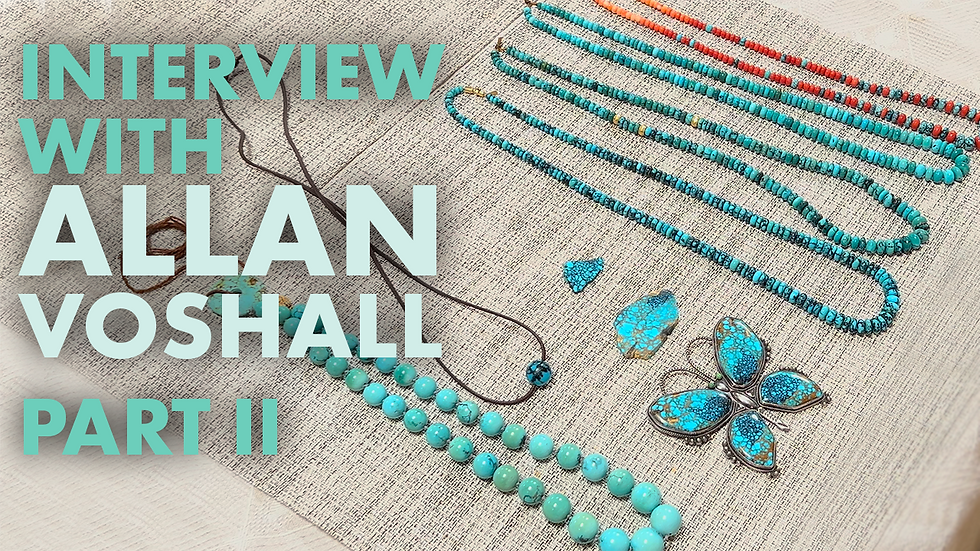Hidden Valley
- Jan 18, 2021
- 5 min read
Updated: Jan 20, 2021
Of all the tales of turquoise one of the most cherished is that of the hat mine, the mine that is so small that it may be covered by a cowboy hat. While descriptive and imaginative the tale should not be taken literally. It means a mine of small area and very small production. Perhaps the most famous hat mine is Lander Blue where about 110 pounds of turquoise were removed from an area of about twenty by twenty feet on the side of a steep hill slope.
The origin of the hat mine is founded in two basic facts of turquoise. First, you need to move a lot of dirt to find a little turquoise, and two, most turquoise miners are opportunistic and undercapitalized. Turquoise is a relatively soft stone, prone to fracture, and care must be taken during excavation. Blasting may damage the stone and even large equipment such as a bulldozer or excavator may cause harm in the hands of an unskilled operator. While large equipment allows for the movement of much more volume of overburden, in the end turquoise mining requires much hand work including washing, with often scarce, and therefore very expensive water, screening and then hand picking. Small scale miners, and all turquoise miners are by definition small scale, are often forced to stake many claims and work them as the opportunity for turquoise presents itself. This is especially true in Nevada. The miner will work a claim that is producing and if the turquoise pocket or vein plays out move on to another claim rather than attempt to find a new vein or pocket. In this manner some claims appear as hat mines, not necessarily because all turquoise has been depleted but rather because the demand of cash flow required reallocation of scarce capital, primarily labor.
Hidden Valley is another turquoise mine of little production with some mystery in its history. Wayne Nelson is a man with much first-hand experience with turquoise. He cut stone for Francis Farr at Lone Mountain in 1974-75 and in 1985 was the only one to ever have the concession to mine turquoise at the silver mine at Candelaria owned by NERCO mining company. That story is included in Turquoise in America Part Two 1910-1990. In 1976 he was approached by a man he had met while in Tonopah, a prospector, one of many roaming the hills of Esmeralda County Nevada during the turquoise boom of the seventies.
The prospector, whose name Wayne refuses to divulge since he has passed away, showed up at Wayne’s home in Las Vegas with six hundred pounds of rough turquoise. Wayne relates how much of it was soft and crumbly and he estimates that after cleaning there was perhaps four hundred pounds of salable rock. Wayne bought some, sold it and went back and bought some more. He cut some as well and sold the cut stones to many of his regular customers including Charles Loloma, Don Hoel and Palms Trading Company in Albuquerque. He sold rough stone to Gertrude Zachery in Albuquerque and Don Mortensen of Anasazi Traders in Gallup. Wayne estimates that over several years he sold most of the available Hidden Valley except for what he held back for himself. This reserve has been slowly sold over many years.
Of the four hundred pounds lets assume about three hundred was sold as rough and fifty to one hundred pounds cut and sold as cabs. Assuming a fifty percent loss rate that would mean between fifty and one hundred thousand carats of cut Hidden Valley came on the market during the late seventies and early eighties. Surprisingly Hidden Valley is not that common in Indian jewelry leading to speculation that much of the material was hoarded. Most of the production from Lander Blue was cut with almost no rough sold and this would be about the same weight of cut cabs as in our Hidden Valley scenario yet Lander Blue is more common in fine jewelry than Hidden Valley.
The Stories of Turquoise: Wayne Nelson
It was a friend of mine that found it. He was prospecting. He did all kinds of those things. He found this turquoise in the Candelaria Hills. What he got out of there was about maybe 600 pounds, and that was it. I didn't have it all at one time, but I took some of it, and then marketed it. I had stuff from a lot of different mines. I was buying from miners, cutting and selling. Well, in the end, I had it all but I sold a lot of rough to pay him for that. It was both vein and nugget, but a lot of nugget. A lot of it was crumbly. It was funny looking stuff at first. I didn't even know if I wanted it, when I first looked at it, until I cleaned it. Well, I'd sell a little bit of it all the time just the blue, not the high grade but the regular part of it.

Very High Grade Hidden Valley with distinctive matrix, 113 carats. Photo Arland Ben. Wayne Nelson Collection."This was off that one piece I kept for 44 years."

Very High Grade Hidden Valley resembling Candelaria. Photo Chaney Turquoise Direct. Wayne Nelson Collection sold in 2015.

High Mid Grade Hidden Valley. Photo Chaney Turquoise Direct. Wayne Nelson Collection sold circa 2000.

Vein formation Hidden Valley. Photo Chaney Turquoise Direct. Wayne Nelson Collection sold circa 2000.
We may speculate on the source of this turquoise. We are told it was in the Candelaria Hills on land that had not been staked for a claim. While this may be accurate it is possible that the turquoise was high graded from an existing claim or from mining company property. Finding that much turquoise on open land it is unlikely a prospector would not immediately stake the claim and file a location. There is no record at the Esmeralda County Recorder of a located claim in the name Hidden Valley. Wayne believes that a leech field now covers the site of the original claim which would give credence to it being on mining company property. Also a mining company would have been more likely to leave stone for someone to pick up. Anyone working a claim would not have left turquoise of this grade behind to be easily high graded. While mining companies had no interest in turquoise they certainly did not want trespassers, primarily from a liability standpoint.
In any case the turquoise remains somewhat of an enigma because of its rarity, unique color and matrix and uncertain past. It is a highly sought, valuable turquoise both in cabochon and in jewelry. For more information on this and and other turquoise read Turquoise in America, Part Two 1910-1990.
Mike Ryan II




Comments